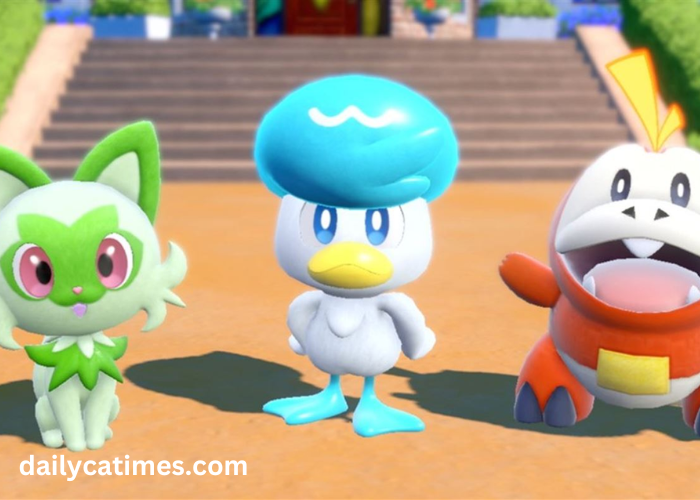The Pokémon franchise, a cornerstone of global pop culture, has undergone a remarkable evolution since its inception. Born in the mid-1990s, Pokémon began as a humble video game for the Game Boy, but it has since blossomed into a multifaceted empire encompassing games, television series, movies, merchandise, and much more. This article explores the journey of Pokémon from its early days to its current status as a worldwide phenomenon. Discover the art of tatsugiri on our website. Explore a wide range of designs and techniques, showcasing the beauty and skill of this traditional Japanese sword cutting technique.
The Birth of Pokémon
In 1996, Satoshi Tajiri and Ken Sugimori, working with Game Freak and Nintendo, introduced the world to Pokémon with the release of Pokémon Red and Green (later released as Red and Blue internationally) for the Game Boy. Inspired by Tajiri’s childhood love of collecting creatures and the urban myth of finding rare bugs in the Japanese countryside, the game’s concept centered around players, known as Trainers, capturing and training fictional creatures called Pokémon to battle each other.
The simple yet captivating gameplay, combined with the innovative concept of trading Pokémon between Game Boy devices via link cables, captured the imaginations of millions. The slogan “Gotta Catch ‘Em All!” became a cultural mantra, emphasizing the game’s collection aspect.
Expansion into Other Media
Following the success of the original games, the Pokémon franchise quickly expanded into other media. In 1997, the Pokémon anime series debuted in Japan, introducing audiences to Ash Ketchum and his trusty Pikachu. The series became an instant hit, known for its engaging storylines and memorable characters. The anime’s success helped Pokémon gain international fame when it was brought to the West in 1998.
The same year, the Pokémon Trading Card Game (TCG) was launched, adding another layer to the Pokémon experience. The TCG allowed fans to collect and battle with Pokémon cards, further solidifying the franchise’s appeal across different formats.
The Golden Era: Late 1990s to Early 2000s
The late 1990s and early 2000s marked the golden era of Pokémon. Following the original games, Pokémon Gold and Silver were released for the Game Boy Color in 1999, introducing new mechanics, Pokémon species, and a real-time clock system. These games were critically acclaimed and further entrenched Pokémon’s position in the gaming world.
The anime continued to thrive, with several movies being released, including “Pokémon: The First Movie” in 1998, which was a box office success. The franchise’s influence extended to a vast array of merchandise, from toys to clothing, ensuring that Pokémon remained a constant presence in the lives of young fans.
Adapting to Change: Mid-2000s to 2010s
As technology evolved, so did Pokémon. The release of the Nintendo DS brought Pokémon Diamond and Pearl in 2006, which utilized the DS’s dual-screen capabilities and introduced online trading and battling. This period also saw the introduction of the Pokémon Global Trade Station (GTS), allowing for worldwide Pokémon trading.
In 2010, Pokémon Black and White were released, marking the fifth generation of Pokémon games. These games brought significant changes, such as animated Pokémon sprites and a deeper storyline. The Pokémon Company continued to innovate, maintaining the franchise’s relevance amid a rapidly changing gaming landscape.
Pokémon GO and Beyond
Perhaps one of the most transformative moments in Pokémon’s history came in 2016 with the release of Pokémon GO. Developed by Niantic for iOS and Android devices, Pokémon GO utilized augmented reality (AR) technology to place Pokémon in the real world, encouraging players to explore their surroundings to catch Pokémon. The game became a global phenomenon, drawing millions of players of all ages and bringing Pokémon into the mainstream like never before.
Following the success of Pokémon GO, the franchise continued to expand. The release of the Nintendo Switch brought Pokémon Sword and Shield in 2019, which introduced a new region, Galar, and new gameplay mechanics, such as Dynamaxing and the Wild Area. Pokémon continued to evolve, embracing new technologies while staying true to its core elements.
The Cultural Impact of Pokémon
Beyond its commercial success, Pokémon has had a profound cultural impact. It has influenced generations of gamers, inspired countless imitations, and become a symbol of 1990s nostalgia. The franchise has also played a role in promoting social interaction, from the early days of link cable trading to the community events of Pokémon GO.
Conclusion
The evolution of Pokémon from a simple Game Boy game to a global phenomenon is a testament to its timeless appeal and adaptability. Over the past few decades, Pokémon has grown and changed, yet it has always retained its core essence: the joy of exploration, collection, and adventure. As it continues to evolve, there is little doubt that Pokémon will remain a beloved and influential part of our cultural landscape for many years to come.


